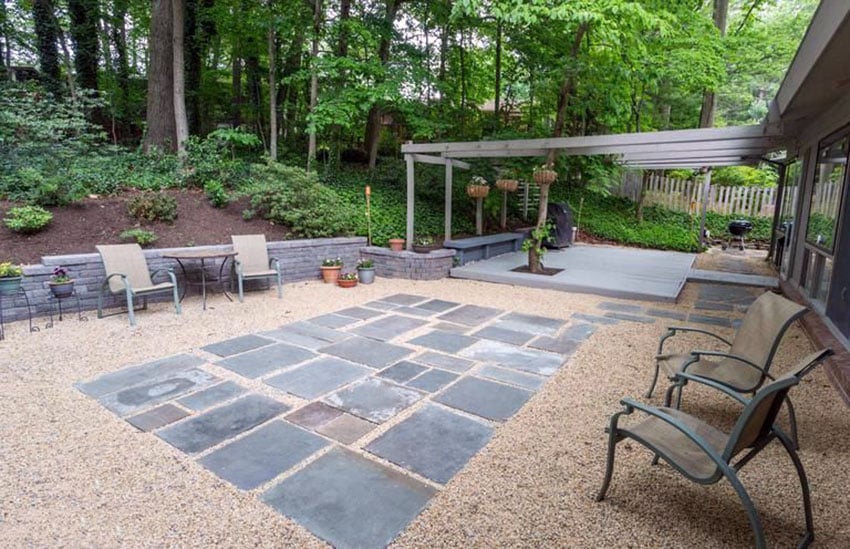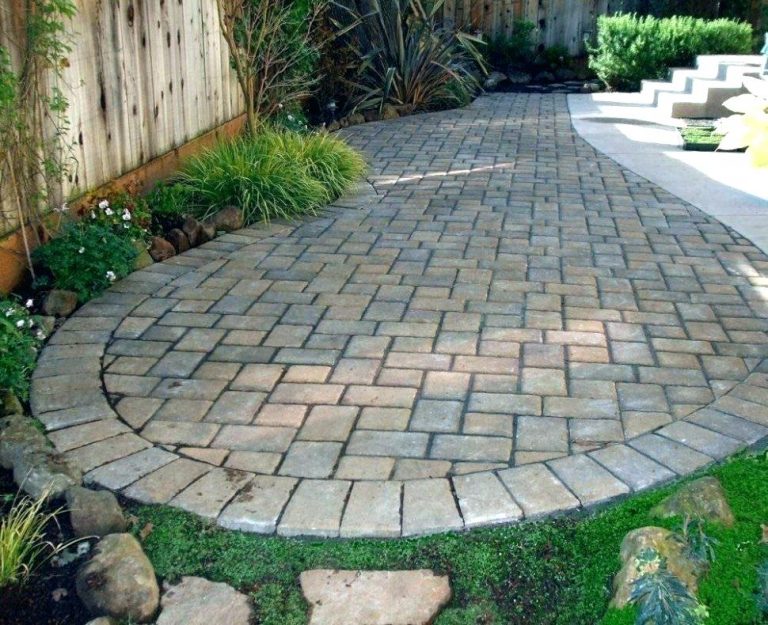Make the backyard simple, beautiful, and expand your living room outside the house with a patio paver. You can install paving stones by yourself.
The terrace can be made with many ingredients, but it is hard to beat which is made of pavers for easy installation and low maintenance.
Initial costs may be higher than other options, but you will save in the long run by not having to tarnish or seal them continuously and repair becomes easier.
This is a big step out of the back door: You have decided to build or remodel the terrace. If it’s not a traditional concrete slab – or will cover the existing one – you have to choose ingredients that are more than good. The terrace that is made durable must be built with strong and durable material.
Whether working solo or with landscape architects or contractors, the budget, size of space, color, and architectural style of your home will influence material choices.
Likewise, availability: local stones mingle with the surrounding environment and do not require as much cost as hard-to-find materials to send.
Think about what will be used for the patio and who will use it when looking at the material. Flat, smooth, flat surface needed for dining room, living room, and for accessibility.
Rough rocky roads and corrugated aggregate concrete pavers can cause someone to stumble or inhibit the mobility of someone using a cane, pedestrian, or wheelchair.
Conversely, very smooth surfaces such as polished concrete or granite can become slippery when wet. Use an antiskid coating on a high traffic surface that has the potential to become slippery.
Before you install your paving stones, you need to know about the material that you used. There are four materials that you should know with low price.
1. Packed Gravel

Gravel is a great choice for affordability and ease of installation. Start by marking the area for the terrace and digging the grass. Make sure the base is flat and solid using tamper.
To prevent grass from reaching the terrace, you can use the edge of the landscape, treated wood or bricks as a border.
Cover the area with a landscape cloth to block the weeds and let them flow. Spread the gravel so that it is 4 to 5 inches thick, and pack it with tamper.
2. Crushed Stone
Crushed stones are usually something that you will use as a base for pavers, but we have found that they make the terrace space extraordinary by itself. After you compress it and wash it, it becomes a solid surface.
You can use the same limiting material you want for a gravel terrace. This is also a good choice if you plan to put Pavers at a later time, because you are ready with your base.
3. Pavers
After you put, cut and wet the base material, and it has formed a sturdy surface, then you are ready for pavers. Pavers come in various patterns, sizes and materials. Place the pavers and top them with topping sand to lock the pavers in place.
4. Concrete Forms
Using concrete forms, such as the Quikrete WalkMaker, is another good choice for the patio. Although made of concrete, they can be made to look like bricks or stones, and can be adjusted by adding color to the concrete mixture or coloring after dry concrete.
An attractive and cost-effective option is to use concrete pavers, which can be thrown in various sizes, shapes and colors.
Different textures and finishes can be applied to concrete, such as rock salt, aggregate, fake final results, etching, stamping, and hand engraving. Even objects as simple as a broom or rake can create an attractive texture surface.
How to Install Paver Patio
Before you prepare your patio area, contact your local utility to have a marked pipe, cable or power line. Then dig below the level of the root vegetation in the area, about six inches.
For dry soil, try watering the area the night before you plan to dig to moisturize and soften the area to make it easier to dig.
Use a landscape cloth to make a barrier between the old ground and the new sand base you will use. This will minimize unwanted weeds and other vegetation to penetrate your terrace from below. Calculate the square footage of your patio space by multiplying its length by width and adding 10 percent.
Pack it in the bottom of the paver and / or sand using a compactor or a wacker tamper plate. You need a sturdy, flat and smooth base to lay pavers. Remember to repackage each subsequent material layer.
While it’s important to have a flat terrace, you need to make sure the slope is far from the foundation of your home and towards an area that can handle additional moisture or existing drainage areas. Plan a quarter inch height for every two feet.
Be sure to plan for good solid edges using additional pavers, solid cement lips, or metal or vinyl edges. Besides stability, this will also help minimize weed creeping.
You will experience a little color variation in your pavers, just like you do with many wooden floors or tiles. Combine various stacks of stones or bricks together to create a natural look, so that you will avoid the patchy appearance.
If you make a pattern with your pavers, you need to cut some stones or bricks at some point. You can use cold chisels to do this, or you can save your hands and rent a wet saw from the center of your local home.
Arrange your pavers in place by applying a layer of sand above and between them until the cracks are completely full. This will help keep them in place, minimize weeds and allow drainage.
Prepare a few extra stones or bricks to facilitate repairs (you never know when your special paver might be stopped).
Broken pavers can be removed by prying them with a few screwdrivers or thin strips. If the paver needs to be cut to fit, make sure to cut it slightly smaller than the length of the hole to allow sand to be wrapped around it.
Those are some things you need to pay attention to when you want to install paving on your yard.
Keyword: Paver Patio Ideas
